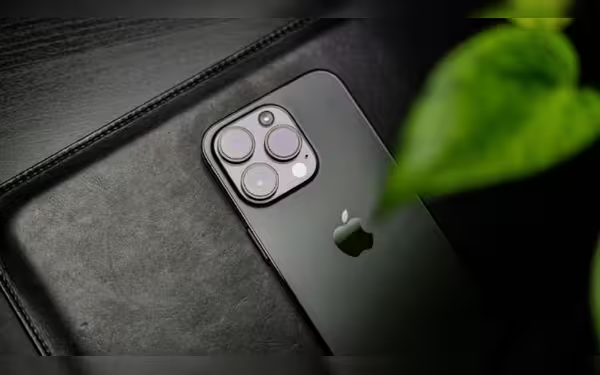Saturday, November 16, 2024 05:49 PM
iPhone 18 Introduces Variable Aperture Camera for Enhanced Photography
- iPhone 18 to feature revolutionary variable aperture technology.
- New camera mimics human eye for better lighting adaptation.
- Apple aims to set new standards in smartphone photography.
 Image Credits: phoneworld_pk
Image Credits: phoneworld_pkThe iPhone 18 is set to revolutionize photography with its new variable aperture camera technology, enhancing photo quality in various lighting conditions.
In the ever-evolving world of smartphone technology, Apple has consistently been at the forefront, pushing boundaries and setting new standards. The upcoming iPhone 18 series is no exception, as it is rumored to introduce a groundbreaking camera feature that could revolutionize smartphone photography. This new technology, known as variable aperture, aims to mimic the way the human eye adjusts to different lighting conditions, thereby enhancing photo quality significantly.
According to industry expert Ming-Chi Kuo, Apple is collaborating with leading suppliers such as Sunny Optical and Largan Precision to bring this innovative camera technology to life. The variable aperture lenses will allow the camera to adapt its opening size based on the surrounding light, much like how our pupils react to brightness. Currently, most smartphone cameras, including the iPhone 16 Pro Max, utilize a fixed aperture, which can limit their performance in varying lighting situations.
For instance, the iPhone 16 Pro Max has an aperture of f/1.78, which is great for low-light conditions as it allows more light to hit the sensor. However, in bright environments, this wide aperture can lead to overexposed images, where details are lost in the brightness. The introduction of variable aperture lenses will solve this problem by dynamically adjusting the lens opening. In dim settings, the lens will expand to capture more light, while in bright conditions, it will contract to prevent overexposure. This feature promises to deliver better-exposed photos, reducing the need for digital editing and enhancing the overall quality of images.
Moreover, the size of the aperture also plays a crucial role in determining depth of field and focus. With a variable aperture lens, users can achieve the popular “blurred background” effect for artistic shots by widening the aperture. Conversely, narrowing the aperture will allow for sharper focus in landscape photography. This level of control will empower iPhone users to express their creativity more freely, potentially even offering manual adjustments for a personalized photographic experience.
While variable aperture technology is not entirely new to the smartphone market—Huawei’s Pura 70 Ultra has successfully implemented it—Apple’s approach is expected to refine and enhance this feature. Samsung, on the other hand, discontinued this technology after its Galaxy S10 series, leaving a gap that Apple seems poised to fill. If successful, Apple’s variable aperture innovation could become a must-have feature for smartphone photographers by 2026, setting a new benchmark for image quality.
The anticipated introduction of variable aperture technology in the iPhone 18 series represents a significant leap forward in smartphone photography. By mimicking the human eye's ability to adapt to different lighting conditions, Apple is not only enhancing the user experience but also paving the way for more creative possibilities in photography. As we await the official launch, it is clear that this innovation could change the way we capture and share our moments, making every photo a masterpiece.













